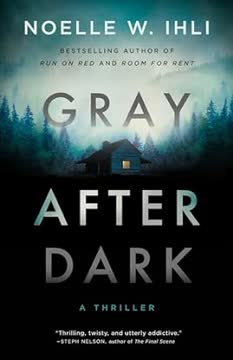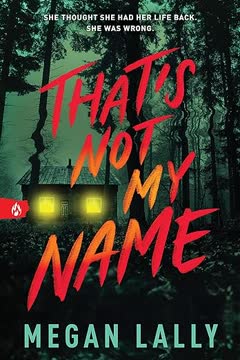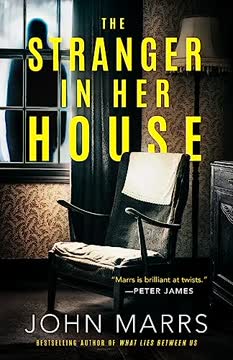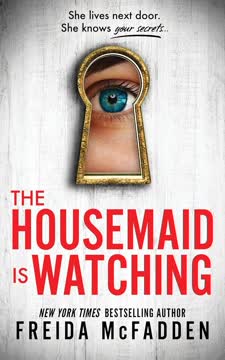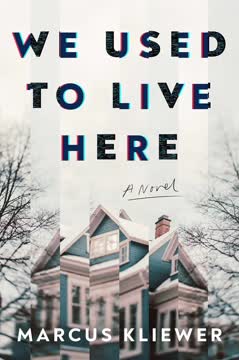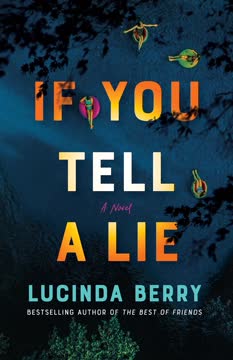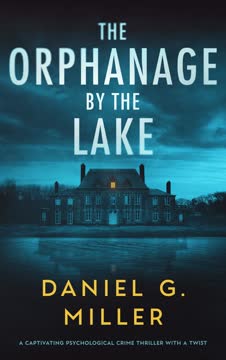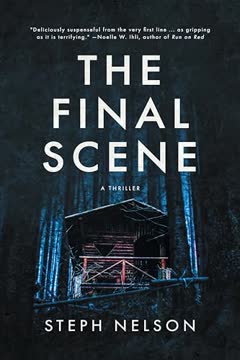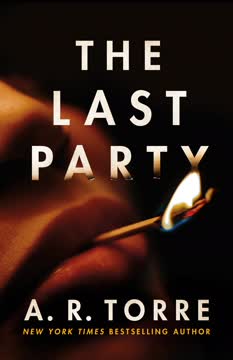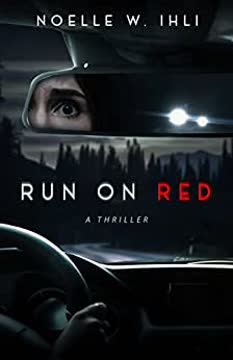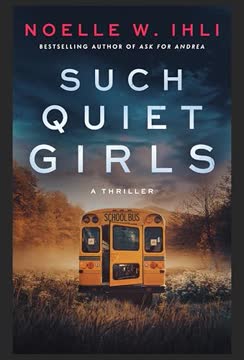Plot Summary
Running Toward Shadows
Olympic hopeful Miley Petrowski runs through Idaho's Frank Church Wilderness, haunted by the pain of a past accident and the loss of her mother. Her morning runs are both training and therapy, but the forest's beauty is shadowed by her guilt and trauma. She's at Hidden Springs Resort for a summer job, hoping to rebuild her body and spirit. The wilderness, vast and indifferent, becomes a stage for her internal struggle. As she pushes through pain, she's stalked by memories and the sense that something is watching. The forest is both sanctuary and threat, foreshadowing the ordeal to come. Miley's determination to keep moving forward, despite everything, sets the tone for her resilience and the survival story that will unfold.
Ghosts of the Accident
Flashbacks reveal the car accident that killed Miley's mother, a tragedy for which Miley blames herself. The accident, caused by a moment's distraction, left her physically and emotionally scarred. Her best friend and teammate, Brent, is her anchor, but even he can't reach the depths of her self-reproach. The accident derailed her Olympic dreams and left her with chronic pain—a constant reminder of her failure. The narrative explores the weight of survivor's guilt and the way trauma can freeze a person in time. Miley's struggle is not just to heal her body, but to forgive herself and find a reason to keep living and loving.
Summer at Hidden Springs
Miley arrives at Hidden Springs Resort, hoping for a fresh start. She meets Wes, a quirky coworker, and Jennifer, the demanding owner. The staff is a mix of college kids and locals, and Miley feels both older and out of place. She's determined to keep her head down, train, and avoid drama. Yet, rumors about her past and the accident swirl among the staff, isolating her further. The resort's routines are comforting but also stifling, and the wilderness outside is both a lure and a warning. Miley's connection with Wes grows, but her heart remains tethered to Brent and the pain she can't escape.
Bear Warnings and Whispers
The staff is obsessed with bear safety, a fixation rooted in the story of Rayna, a staffer who vanished years ago—presumed killed by a bear. Miley dismisses the warnings, but the tale plants seeds of dread. The wilderness is alive with threats, both animal and human. Miley's runs become fraught with anxiety, and the line between caution and paranoia blurs. The story of Rayna foreshadows the violence to come and hints at the darkness lurking in the woods. The staff's camaraderie is tested by fear, gossip, and the ever-present sense that something is not right.
Unspoken Love, Unhealed Pain
Brent's love for Miley simmers beneath the surface, complicated by her trauma and his own fears. Their friendship is deep, but the possibility of more is fraught with risk. Miley is unable to open her heart, convinced she doesn't deserve happiness after the accident. Brent's confession of love is met with silence and anger, deepening the rift between them. Their connection is a lifeline, but also a source of pain. The emotional tension between them mirrors Miley's physical pain—persistent, unresolved, and shaping every decision she makes.
The Disappearance
One morning, Miley goes for a run and doesn't return. At first, her absence is dismissed as a flake, but as hours pass, concern grows. Brent is notified and rushes to Idaho, consumed by fear and guilt. The search party, led by local authorities and volunteers, is hampered by the vastness of the wilderness and the lack of clues. The discovery of Miley's bloody clothing and abandoned shoes at a remote lake suggests a bear attack—or something worse. Hope fades as days pass, but Brent refuses to give up, convinced Miley is still alive.
Into the Wilderness
Miley is kidnapped by Fred and Hamish, two off-grid survivalists who chain her and march her barefoot through the forest. She's stripped of her autonomy, dignity, and hope, forced to endure physical and psychological torment. The men's twisted logic and brutality are chilling, and Miley's only solace is her determination to survive. She leaves a trail of her own hair as a breadcrumb for rescuers, clinging to the hope that someone—Brent—will find her. The wilderness becomes a prison, and every step is a battle against despair.
Captive in Chains
Miley is brought to a remote cabin, where she meets Mary (Rayna), Fred's wife and a former victim herself. Chained, starved, and beaten, Miley is forced to adapt to survive. The men's plans for her are clear: she is to be "tamed" and married to Hamish. Mary, broken but functional, is both a warning and a reluctant ally. The daily routines of captivity—work, punishment, and fleeting moments of kindness—erode Miley's sense of self. Yet, she refuses to let go of hope, even as her body and spirit are battered.
Taming and Survival
Miley learns to feign compliance, adopting the persona of "Ruthie Sue" to gain small freedoms. She and Mary are chained together, forced to work in tandem. Miley's physical condition deteriorates, but her mind sharpens. She studies her captors, looking for weaknesses, and waits for the right moment to act. The psychological battle is as intense as the physical one, and Miley's resilience is tested to its limits. The bond with Mary deepens, complicated by betrayal and shared suffering. Survival becomes an act of defiance.
Mary's Secret
Mary is revealed to be Rayna, the missing staffer from years ago. Her transformation from victim to collaborator is a study in Stockholm syndrome and the cost of survival. Rayna's story is a mirror for Miley—a warning of what happens when hope dies. Yet, Rayna's humanity persists, and her eventual decision to help Miley is a turning point. The two women's fates are intertwined, and their alliance becomes the key to escape. The narrative explores the complexities of trauma, identity, and the will to live.
The Trail of Hair
Brent, joined by Wes, refuses to accept Miley's death. They discover the trail of her hair, a desperate breadcrumb through the wilderness. The search is grueling, marked by hunger, exhaustion, and the ever-present threat of failure. The men's partnership is uneasy but necessary, and their determination is fueled by love and guilt. The discovery of signs of struggle and the realization that Miley was taken by humans—not a bear—rekindles hope. The wilderness, once a barrier, becomes a path to redemption.
The Failed Escape
Miley and Rayna attempt an escape, only to be betrayed by Rayna's fear and loyalty to Fred. The punishment is brutal—beatings, starvation, and renewed captivity. Miley's spirit is nearly broken, but the experience clarifies her resolve. She realizes that survival requires patience, cunning, and the willingness to play the long game. The failed escape is a crucible, burning away illusions and forging a new, steely determination. Miley's relationship with Rayna is strained but not severed, and the hope of rescue flickers on.
The Long Game
Miley perfects her act, convincing her captors she is tamed. She endures a forced wedding to Hamish, submitting to further violation and humiliation. Yet, every act of compliance is calculated, every smile a mask. She waits for the right moment, gathering strength and information. The psychological toll is immense, but Miley's will is unbroken. The narrative delves into the cost of survival—the sacrifices, the compromises, and the lines that must be crossed. The long game is a test of endurance, and Miley is determined to win.
The Wedding Night
Miley endures her wedding night, dissociating into memories of her mother and the accident. The pain is both physical and existential, but in the darkness, she finds a strange clarity. The phantom pain in her shoulder vanishes, symbolizing a turning point in her healing. The past and present merge, and Miley's love for Brent becomes a lifeline. The narrative explores the power of memory, the persistence of hope, and the possibility of redemption even in the darkest circumstances.
Reunion and Ruin
Brent and Wes finally reach the cabin's vicinity, guided by the last strands of Miley's hair. A chance encounter brings Brent, Miley, Rayna, and Wes together in the forest. The reunion is brief and chaotic—Hamish discovers them, shoots Wes, and wounds Brent. Miley is forced to feign grief and compliance to protect Brent, who plays dead. The cost of survival is high, and the line between victory and ruin is razor-thin. The narrative's tension peaks as hope and horror intertwine.
The Final Hunt
Miley and Rayna hatch a plan to lure Fred and Hamish into the open. Rayna, reclaiming her identity, risks everything to play the role of bait. Miley, drawing on her biathlon training, prepares for a final, deadly confrontation. The plan is fraught with danger, and the outcome is uncertain. The narrative becomes a cat-and-mouse game, with survival hanging on split-second decisions and unerring aim. The wilderness, once a prison, becomes a battlefield.
Shots in the Dark
The final showdown unfolds in darkness and chaos. Miley's marksmanship and Rayna's courage turn the tide—Fred is killed, Hamish is wounded and ultimately dispatched with Rayna's help. The cost is immense: Wes is dead, Brent is gravely wounded, and Rayna's future is uncertain. Yet, the women's alliance and resilience triumph over brutality. Miley's escape through the wilderness, guided by Wes's trail markers, is a testament to endurance and hope. The narrative's emotional arc crescendos in pain, loss, and the promise of freedom.
After the Dark
Miley reaches civilization and orchestrates Brent's rescue. The aftermath is a blur of helicopters, hospitals, and headlines. The trauma lingers, but so does love. Years later, Miley and Brent stand together on the Olympic podium, their scars a testament to survival. Rayna, reborn, is part of their family—a symbol of healing and the possibility of reclaiming life after horror. The story ends not with triumph over evil, but with the quiet, hard-won victory of choosing to live, love, and hope again.
Characters
Miley Petrowski
Miley is a young Olympic biathlete whose life is derailed by a tragic car accident that kills her mother. Driven by guilt and a relentless need to prove herself, she seeks solace and redemption in the wilderness. Her psychological landscape is shaped by trauma, self-blame, and a fierce will to survive. Miley's journey from victim to survivor is marked by her ability to adapt, feign submission, and seize fleeting opportunities for escape. Her relationships—with Brent, Rayna, and her captors—reveal her complexity: vulnerable yet unbreakable, compassionate yet cunning. Miley's arc is one of reclamation—of her body, her agency, and her capacity for love.
Brent McGowen
Brent is Miley's best friend, teammate, and the unspoken love of her life. His loyalty is unwavering, and his love is patient, enduring years of emotional distance and unrequited longing. Brent's own insecurities and emotional volatility mirror Miley's struggles, but his determination to find her never wavers. The search for Miley becomes a crucible, testing his endurance, hope, and capacity for sacrifice. Brent's psychological depth is revealed in his willingness to risk everything, including his life, for the woman he loves. His survival and reunion with Miley are hard-won, marked by trauma but also by healing and the promise of a future together.
Rayna / Mary
Rayna, once a promising young woman, is transformed into "Mary" by years of captivity and abuse. Her identity is fractured by trauma and Stockholm syndrome, yet her humanity persists. She is both a warning and a mirror for Miley—a testament to the cost of survival and the possibility of reclaiming oneself. Rayna's journey from collaborator to ally is fraught with betrayal, guilt, and moments of courage. Her ultimate decision to help Miley is an act of redemption, and her post-rescue life is a symbol of hope for survivors everywhere.
Fred
Fred is the older of the two captors, a man whose worldview is shaped by paranoia, misogyny, and violence. He is both cunning and cruel, using psychological and physical abuse to control his victims. Fred's relationship with Hamish is toxic, marked by dominance and manipulation. His treatment of Mary and Miley is dehumanizing, reducing them to property. Fred's character is a study in the banality of evil—the way ordinary men can become monsters in the right circumstances. His death is both justice and a warning.
Hamish
Hamish is Fred's son, groomed to continue his father's legacy of abuse. He is both victim and perpetrator, shaped by isolation and indoctrination. Hamish's desire for control is matched by his need for approval, making him unpredictable and dangerous. His relationship with Miley is marked by a twisted longing for love and power. Hamish's moments of hesitation and confusion hint at the possibility of redemption, but his ultimate choices are violent and irredeemable. His end is a consequence of his inability to break free from his father's shadow.
Wes
Wes is a staffer at Hidden Springs who becomes Brent's partner in the search for Miley. His quirky personality and plant-nerd charm provide moments of levity in a dark narrative. Wes's loyalty and courage are tested in the wilderness, and his death is a gut-wrenching loss. He represents the cost of violence and the collateral damage of evil. Wes's presence lingers in the story as a symbol of friendship, hope, and the small acts of kindness that make survival possible.
Jennifer
Jennifer is the owner of Hidden Springs Resort, a woman whose concern for her staff is complicated by business pressures and personal limitations. She is both a source of support and a symbol of the world's indifference to individual suffering. Jennifer's actions—delayed, imperfect, but ultimately decisive—reflect the challenges of leadership in crisis. Her role in Miley's rescue is crucial, and her character embodies the tension between self-interest and compassion.
Miley's Mother
Though dead, Miley's mother is a constant presence in her daughter's psyche. Her love, wisdom, and sacrifice shape Miley's values and resilience. The accident that killed her is the source of Miley's deepest pain, but also the wellspring of her determination to survive. The memory of her mother is both a wound and a balm, guiding Miley through darkness and reminding her of the possibility of forgiveness and hope.
The Wilderness
The Frank Church Wilderness is more than a setting—it is a character in its own right. Vast, beautiful, and indifferent, it is both prison and refuge, testing the limits of human endurance. The wilderness amplifies fear, isolation, and the struggle for survival, but it also offers moments of grace and clarity. It is the crucible in which Miley's transformation is forged.
The Past
The past—embodied in the accident, lost opportunities, and unresolved love—shapes every character's choices. It is both a chain and a compass, binding Miley to guilt but also pointing her toward redemption. The struggle to escape the past is mirrored in the physical struggle to escape captivity, and the ultimate victory is not just survival, but the ability to live beyond what has been lost.
Plot Devices
Dual Timelines and Flashbacks
The narrative moves fluidly between present-day survival and past trauma, using flashbacks to reveal the roots of Miley's pain and resilience. The accident, Olympic failures, and lost love are not just backstory—they are active forces shaping Miley's decisions and emotional arc. This structure allows the reader to experience the full weight of her journey, making her eventual triumph all the more powerful.
Survival Thriller Structure
The story employs the conventions of the survival thriller—abduction, captivity, escape, and pursuit—but subverts them by focusing on psychological endurance as much as physical. The shifting power dynamics between captors and captives, the use of feigned compliance, and the slow-burn buildup to the final confrontation create relentless suspense. The wilderness itself is a plot device, amplifying both danger and the possibility of rescue.
Symbolic Breadcrumbs
Miley's trail of hair, Wes's fabric markers, and the recurring motifs of braids and braiding serve as both literal and symbolic breadcrumbs. They are acts of hope, resistance, and connection—ways for the lost to be found, for the past to guide the present. These symbols tie the characters together across distance and trauma, reinforcing the theme that survival is a collective act.
Stockholm Syndrome and Identity
The psychological complexity of Mary/Rayna's character is a plot device that explores the effects of prolonged trauma and the ways identity can be both weapon and shield. The tension between submission and resistance, between "Mary" and "Rayna," mirrors Miley's own struggle to survive without losing herself. The interplay of these identities drives key plot turns and deepens the story's emotional resonance.
Foreshadowing and Repetition
The narrative is rich with foreshadowing—bear warnings, stories of missing women, the lessons of biathlon—all of which pay off in the story's climax. Repetition of key phrases ("Just breathe," "Wait for your shot," "Run, rabbit, run") creates a sense of inevitability and fate, while also reinforcing the characters' psychological states. These devices create a tightly woven narrative where every detail matters.
Analysis
Gray After Dark is a harrowing, deeply psychological survival thriller that transcends its genre roots by delving into the complexities of trauma, resilience, and the human capacity for hope. At its core, the novel is about the long, nonlinear journey from victimhood to agency. Miley's ordeal is not just a fight for physical survival, but a battle to reclaim her identity, her body, and her right to love and be loved. The story interrogates the ways in which trauma can freeze us in the past, and how healing requires both patience and courage. The wilderness is both antagonist and ally—a crucible that strips away illusion and forces the characters to confront their deepest fears. The novel's structure, with its dual timelines and symbolic motifs, reinforces the idea that survival is not a solitary act, but a collective one—dependent on memory, connection, and the willingness to trust again. Ultimately, Gray After Dark is a testament to the power of endurance, the necessity of hope, and the possibility of redemption even after the darkest night. It challenges readers to consider what it means to be "tamed," and whether true freedom is found in escape, in forgiveness, or in the choice to keep living despite everything.
Last updated:
Review Summary
Gray After Dark is a gripping thriller about an Olympic biathlete kidnapped in the wilderness. Readers praise its fast-paced, anxiety-inducing plot and compelling characters. Many found it unputdownable, with vivid descriptions and intense scenes. The book's basis on real events adds to its impact. Some criticism includes predictability and graphic content. Overall, reviewers appreciate the author's ability to create suspense and portray a harrowing survival story, though trigger warnings are emphasized for sensitive topics.
Similar Books
Download PDF
Download EPUB
.epub digital book format is ideal for reading ebooks on phones, tablets, and e-readers.
